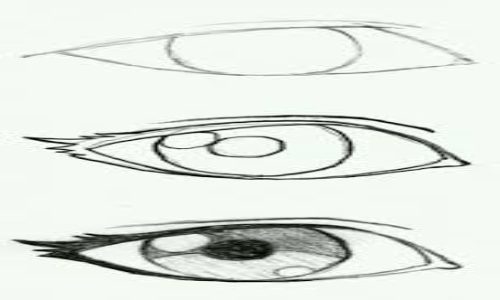Advertisements
Discovering the World of Embroidery: Essential Tools and Materials
Before we venture into the magical art of embroidery, it's essential to create the perfect setting with the right tools and materials.
Imagine each instrument as a paintbrush in the hands of a painter, ready to bring to life a new world of colors and textures. 🌈
Advertisements
Needles and Threads: The Protagonists of Embroidery
In the world of embroidery, the choice of needles and threads is crucial. Embroidery needles are designed to glide easily through fabric and come in various sizes to accommodate different thread types and design complexity.
The threads, in turn, are the color palette that will transform your dishcloth into a work of art. Cotton threads are popular for their durability and variety of colors, but you can also experiment with silk or metallic threads for a more sophisticated touch.
Advertisements
The Little Details: Scissors, Hoops and Fabrics
Embroidery scissors are small and sharp, perfect for cutting threads precisely. The hoops keep the fabric taut, making detailed work easier.
Choosing the right fabric also makes a huge difference. Cotton is the classic choice for dish towels, but experiment with different textures and thicknesses to find what you like best. The most important thing is that you feel comfortable with the material in your hands.
- Embroidery Needles: Choose varying sizes for different line thicknesses.
- Embroidery Threads: Choose from a wide range of colors to create contrasts and visual effects.
- Sharp Scissors: Essential for precise cuts.
- Behind the scenes: Keeps the fabric taut to make embroidery easier.
- Tissue: Cotton is great for beginners, but feel free to experiment!

Embroidery Techniques to Enhance Your Dishcloths
Now that we have all the materials ready, it's time to dive into the embroidery techniques that will transform your dishcloths into unique pieces of artistic expression. 🎨
Cross Stitch: The Timeless Classic
Cross-stitch is a technique that enchants with its simplicity and versatility. It can create everything from geometric patterns to intricate floral designs. The key to a well-executed cross-stitch is the regularity of the stitches, ensuring that they are all the same size and shape. Try creating small figures or repeating patterns for a striking visual effect.
Shadow Point: A Touch of Delicacy
Shadow stitch is ideal for those seeking a more subtle and elegant effect. It creates an ethereal appearance, as if the design is floating above the fabric. This technique involves embroidering on the back of the fabric, allowing the shadow of the thread to appear on the front. It's perfect for creating soft details in flowers or abstract shapes.
Recommended Articles
- Cross Stitch: Ideal for creating sharp, defined patterns.
- Shadow Point: Provides a delicate and smooth finish.
- Back Stitch: Great for contours and fine details.
Inspiration and Creativity: How to Develop Your Own Drawings
Embroidery is a form of expression, and developing your own designs is a powerful way to personalize your creations. 🌟
Exploring Sources of Inspiration
Seek inspiration in nature, art, or even your memories. Photograph interesting patterns you encounter in your daily life or explore art books and magazines. Use a sketchbook to jot down ideas and experiments. Don't be afraid to make mistakes; mistakes often lead to fascinating discoveries.
Transforming Ideas into Drawings
Once you've found your inspiration, it's time to translate those ideas onto paper and then onto fabric. Draw your motifs on tracing paper to experiment with different placements and combinations. Once you're satisfied with the design, transfer it to the tea towel using a fabric-specific pencil. This step is crucial to ensuring your embroidery follows your vision.
- Sketch-book: Use to record ideas and drafts.
- Tracing Paper: Facilitates experimentation with different drawing arrangements.
- Fabric Pencil: To transfer your designs to the tea towel.

Practice and Patience: The Path to Embroidery Mastery
Like any art form, embroidery requires practice and patience. Every stitch you make is a step toward mastering this enchanting technique. 🧵
Practicing Consistently
Establish a practice routine that works for you. It could be a 15-minute daily embroidery session or a larger project on the weekends. The important thing is to maintain consistency. As you practice, you'll notice your skills and confidence naturally grow.
Learning from the Community
Join embroidery groups online or in your local community. Sharing your creations and receiving feedback can be extremely valuable for your growth. Plus, you'll have the chance to learn new techniques and make friends who share your passion.
- Practice Routine: Create a schedule that fits your lifestyle.
- Embroidery Communities: Join groups and forums to exchange experiences and tips.
- Sharing: Don't be afraid to show your work and seek feedback.
Exploring Personalization: Tips for Making Your Embroidery Unique
Transforming dish towels into unique pieces is an art, and personalization is key. Let's explore some tips to ensure your creations are truly yours. 💡
Incorporating Personal Elements
Consider adding initials, special dates, or symbols that have personal meaning to you. This will not only make your dish towels unique, but it will also create an emotional connection with the item, making it a valuable gift for friends and family.
Experimenting with Textures and Colors
Play with different color and texture combinations to create interesting contrasts. Mix metallic threads with cotton, or combine different stitch techniques in a single design. Experimentation is the gateway to innovative discoveries and standout creations.
- Personal Elements: Add personal touches to create memorable pieces.
- Color Combinations: Use the color wheel as a guide for harmonious contrasts.
- Textures: Mix materials to create dimension and depth.

Conclusion
In short, venturing into the world of embroidery is an enriching experience that transforms simple dishcloths into true works of art 🎨. With this amazing embroidery tutorial, you've learned valuable techniques and tips that are essential for any beginner or even those with some experience. By following the step-by-step instructions, you not only develop your manual skills but also stimulate your creativity, allowing each piece to have a personal and unique touch.
Embroidery also offers a fantastic opportunity to personalize gifts 🎁, add value to your handmade products, and perhaps even start a new hobby that could turn into a source of extra income 💰. With the knowledge you acquire, you can explore different styles and techniques, further expanding your artistic repertoire.
Finally, remember that practice makes perfect. So don't hesitate to experiment and be bold with your creations. Keep following our content for more tips and tutorials that will inspire your crafting journey. After all, transforming dish towels has never been so fun and rewarding! 🧵




